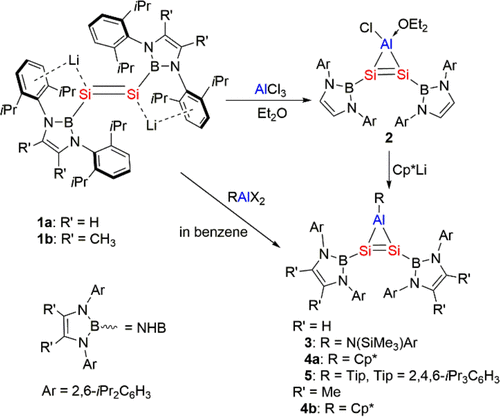Unsaturated three-membered ring systems have been the subject of numerous studies because of their unique electronic structures and properties. As diverse synthons in synthetic chemistry, cyclopropenes have been extensively studied. In the late 1990s, Sekiguchi and Power independently reported the first synthesis of cyclotrigermenes and a cyclotrigermene radical. Following the seminal work, an explosive growth of heavy group 14 cyclopropenes has been witnessed. Furthermore, some related heavy group 13 three-membered rings have also been reported. However, unsaturated three-membered rings composed of elements from both groups 13 and 14 are very limited. Because of the electron deficiency of three-coordinate group 13 ions, these heteronuclear 2π-electron systems are isoelectronic with cyclopropenium cations. Although BC2 unsaturated rings (borirenes) have been well-documented, the heavy heteronuclear systems are much less common. In addition, several examples of BSi2 unsaturated rings have also been reported. However, stable cyclotrimetallenes composed of both heavy group 13 and 14 elements are still elusive, probably due to lack of suitable synthetic precursors and their high reactivity arising from highly polarized bonds between group 13 metals and heavy group 14 elements.

Scheme 1. Synthesis of AlSi2 Unsaturated Heterocycles 2–5
Synthesis and Reactivity of Aluminum Disilacyclopropenes. Cyclic AlSi
2
Delocalized 2π Systems
Lulu Guo, Jianying Zhang, and Chunming Cui*
J. Am. Chem. Soc.
, 2023, DOI: 10.1021/jacs.3c09358